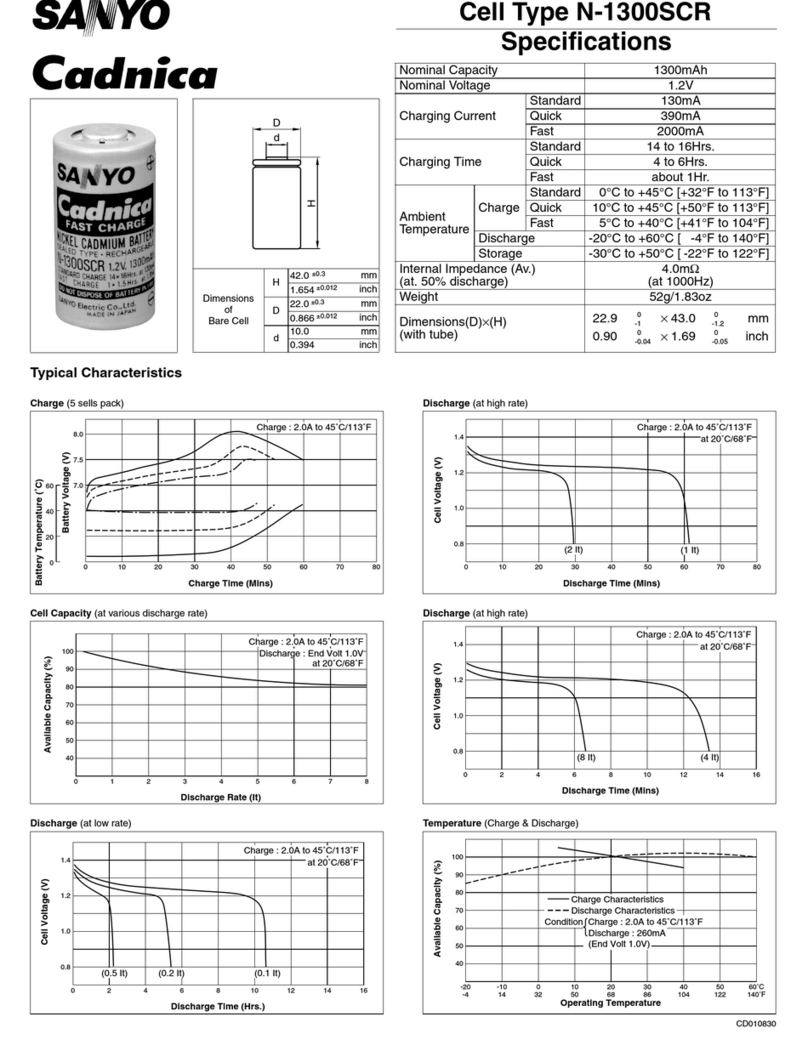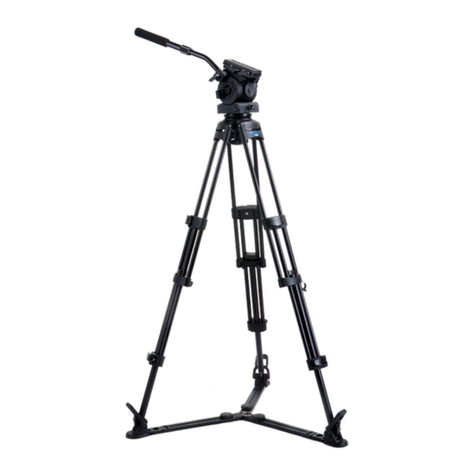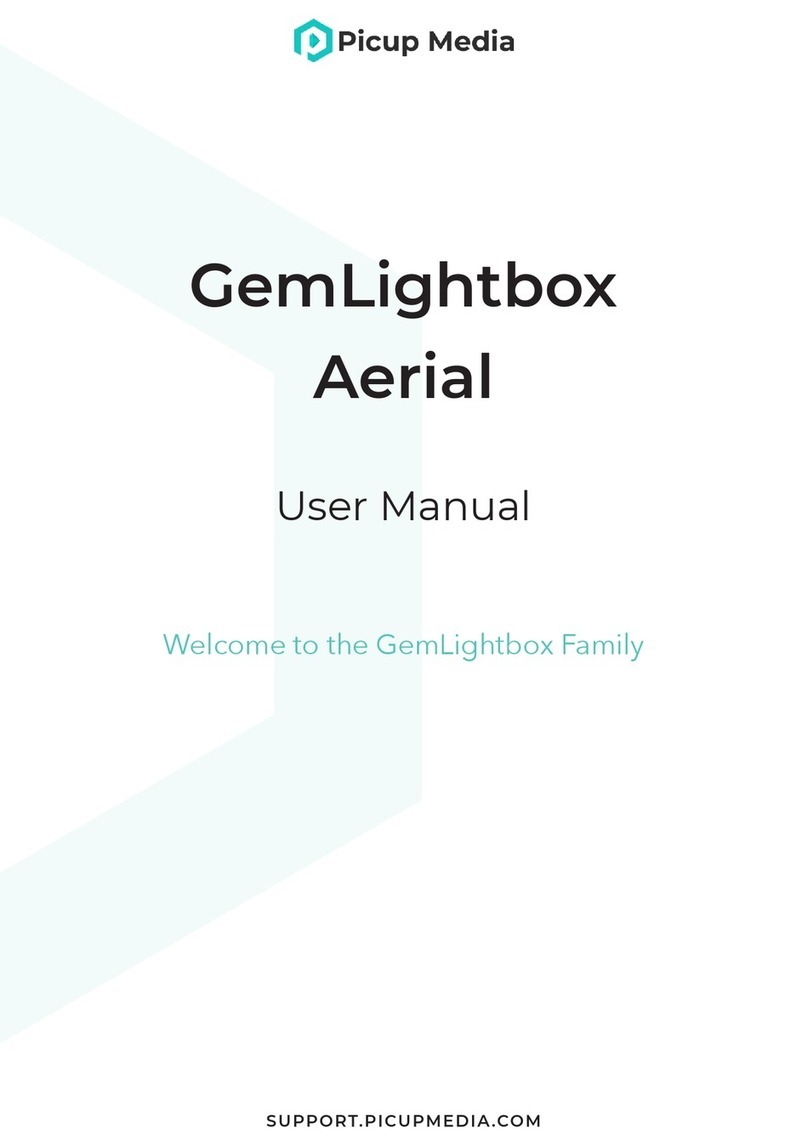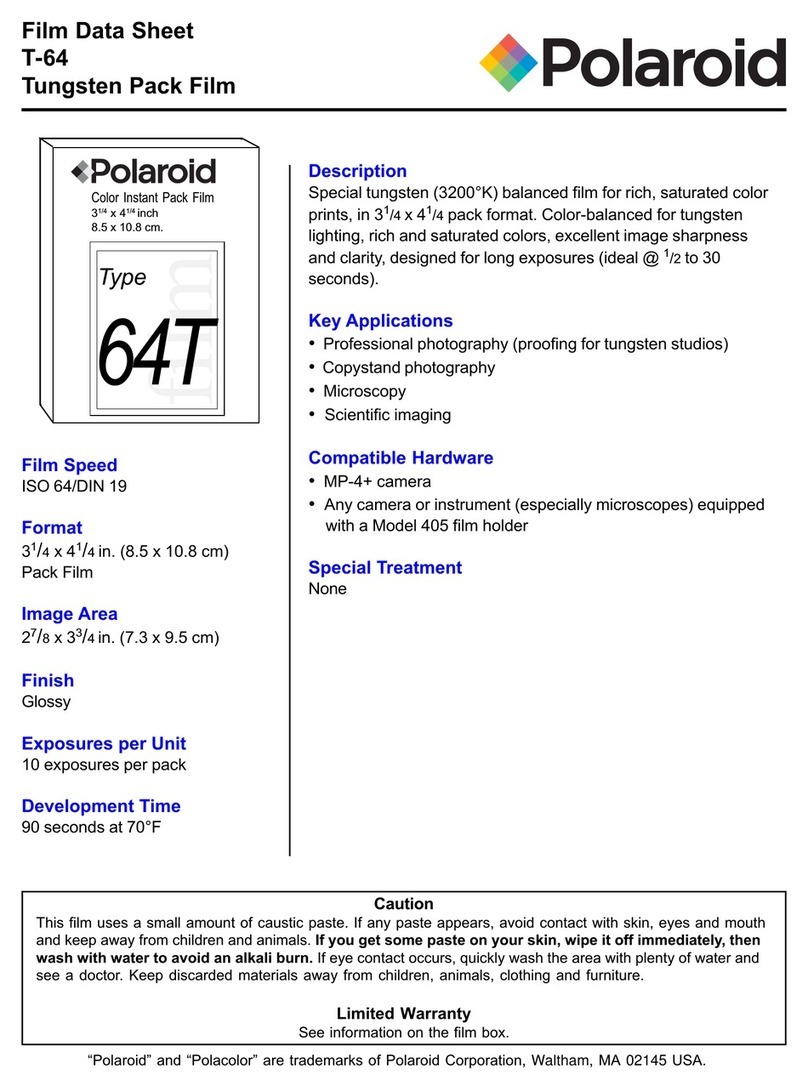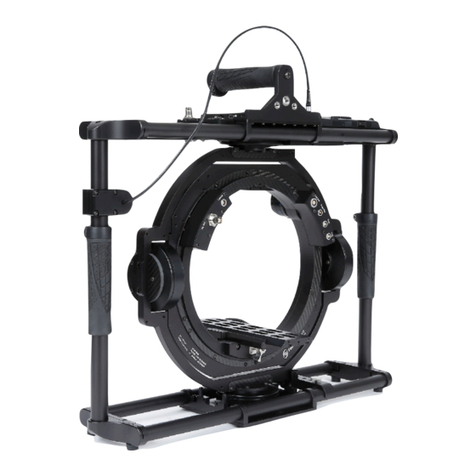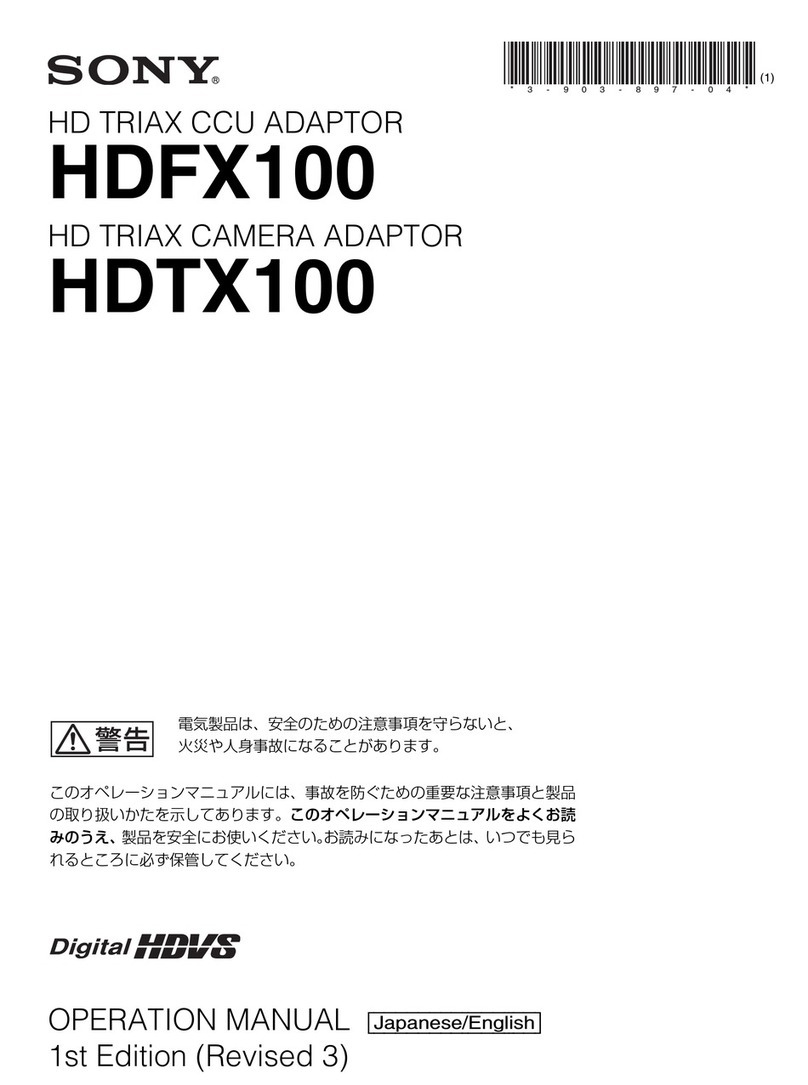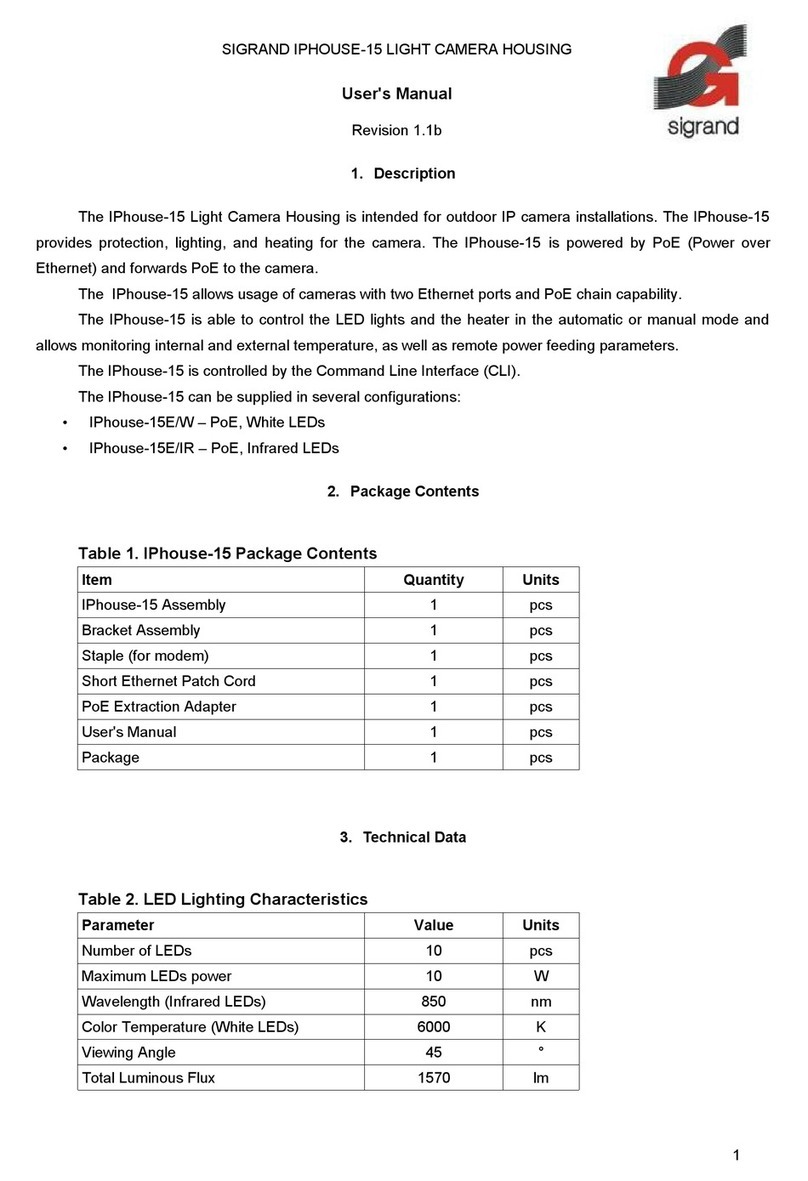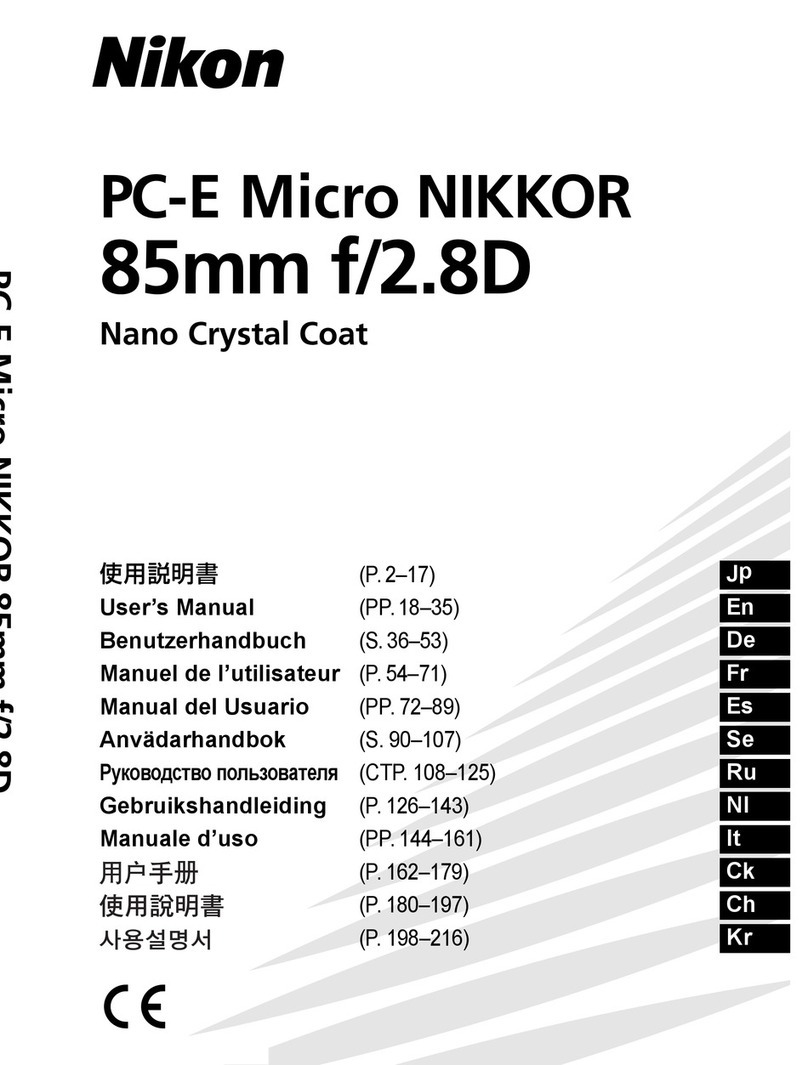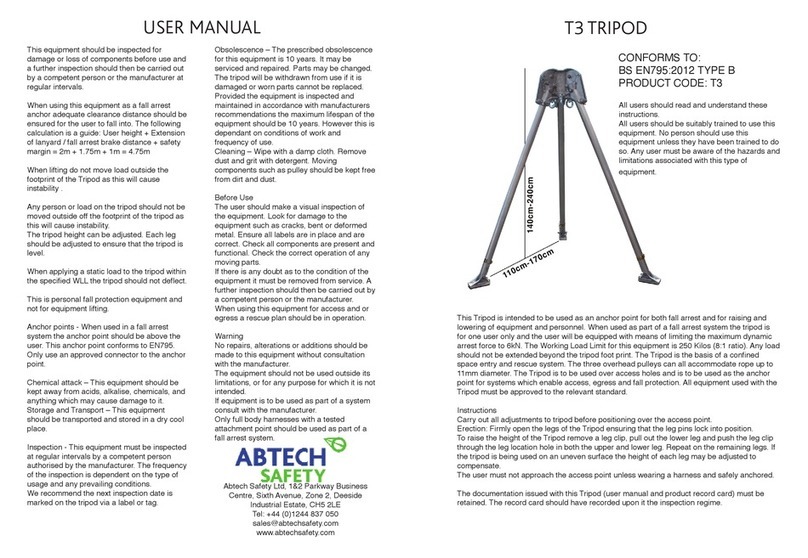ETERNITY OPzV Series Installation and operating instructions

+971 724 33 535
info@eternitytechnologies.com
www.eternitytechnologies.com
OPzV Standby
Eternity Technologies OPzV VRLA Standby & Solar Batteries are designed to be used as
back-up power to support users that need reliable service continuity in case of power
blackouts and outages of the electricity distribution network. They can also be used in
o-grid and hybrid installations.
Installation, Operation and Maintenance
& Solar Batteries
ET/IOM005-0520

Carefully read this manual in all its parts upon receipt of Eternity Technologies OPzV Standby & Solar Batteries. Please refer to
the latest edition of the battery room standards, eective at the moment of installation IEC 62485-2.
Lead-acid Standby & Solar Batteries are components of a system and although they are maintenance free, they require suitable precautions and
behavioural norms to guarantee safe working conditions and to ensure maximum performance of the battery during its entire life. The Installation, Operation
and Maintenance instruction manual supplies the necessary instructions for the correct care, handling, installation, use and maintenance of Eternity
Technologies OPzV Standby & Solar Batteries.
The non compliance with the instructions given herein may cause injury to personnel and damage to equipment as well as poor operation and performance
of the battery. Any repairs made without authorisation, for example, opening the valves, may render the warranty void.
Store this manual in close proximity to the batteries at all times and ensure it is accessible to the relevant personnel.
Observe the following precautions at all times
Observe the operating instructions - work on the battery should be
carried out by qualified personnel only.
Exposed metal parts of the battery carry a voltage and are electrically
live with the risk of short circuits.
Avoid any electrostatic charge; before starting work on the battery,
first discharge any possible electricity from yourself by touching an
earth-connected part; repeat this action occasionally until work is
complete.
Use protective equipment, such as protective clothing, rubber gloves
and goggles.
OPzV Standby and Solar I&O&M
1. Safety Instructions
2. Introduction
3. Delivery, Unpacking and storage
4. Installation
5. Charging
6. Discharge
7. Temperature & Air Flow
8. Cycle Life
9. Hybrid Applications
10. Solar Applications
11. Maintenance
1. Safety Instructions
No naked flames Corrosive Wear safety goggles Read instructions
Keep away from children Explosive Caution Electric shock risk
First aid /
medical assistance
Use insulated tools.
DO NOT place or drop metal objects on top of the battery.
DO NOT wear rings or bracelets.
Remove any articles of clothing with metal parts that might come into
contact with the battery terminals.
DO NOT smoke and DO NOT use open flames or create electric
sparks.
Take all precaution when using the main supply.

Make sure that the first aid kits and fire extinguishers are easily
accessible.
Used batteries contain recyclable materials. They must not be
disposed with household waste but as a special waste. Methods of
return and recycling must conform to the regulations in operation at
the site where battery is located. If in doubt please contact Eternity
Technologies.
2. Introduction
Eternity Technologies range of OPzV Standby and OPzV Solar 2V
batteries are designed for cyclic and float applications. Examples of
these applications are listed below:
a) Base Stations – accessible and remote
b) Solar and wind sites
c) Utility and switchgear
d) UPS
e) Back-up power systems
f) Peak shaving applications
g) Trac Systems
Eternity Technologies range of OPzV batteries are divided into two
product variants:
a) OPzV Standby – Increased capacity, designed for mainly float /
back up applications.
b) OPzV Solar – optimized for greater cycle life through the addition of
phosphoric acid. For cyclic applications.
Eternity Technologies range of OPzV Standby and OPzV Solar
2V batteries utilise a tubular positive electrode design as well as
other robust components designed to withstand all types of use /
environments.
The gelled electrolyte is maintenance free throughout the life of the
product so no topping up is ever required.
Each gas release valve is 100% tested for functionality as the valve is
a critical part of the battery’s design and performance.
3. Delivery, Unpacking and storage
Unpack the batteries as soon as they are delivered. Verify that the
equipment has been delivered in good condition. Any damage must
be reported immediately to the carrier and the damaged items
retained for inspection by the carrier’s representative.
The details on the label should be read carefully and the following
points to be observed:
• Cell Type
• Cell Voltage
• Capacity
• Float charge voltage
• Operating Temperature
If the battery cannot be immediately installed, store it in a dry, cool and
clean place with adequate air flow. Temperature should be between
10-30°C.
Do not expose the battery to direct sunlight, to avoid any damage to
containers and lids.
IMPORTANT NOTE Storage time for charged cells is limited. Please
see the self discharge rates at various temperatures below:
During the storage time, the open circuit voltage (OCV) must
periodically be checked.
Cells with OCV below 2.07 Vpc must be recharged providing
constant voltage of 2.35 Vpc with current limitation of 1.5 x I10 (A), for
24 hours.
The OCV of a fully charged battery should result between 2.12-2.15
Vpc.
Failure to observe the above conditions may result in a greatly
reduced capacity and service life or in permanent damage to the
cells.
4. Installation
PLEASE REFER TO THE LATEST EDITION OF THE BATTERY
ROOM STANDARDS, EFFECTIVE AT THE MOMENT OF THE
INSTALLATION OF THE BATTERY.
NORM REF. EN 62485-2
Check that local regulations are also being complied with.
WARNING
The cells are already charged when delivered and should be
unpacked with care. Avoid short circuiting terminals of opposite
polarity.

Vertical Installation
Place the cells on the rack (or cabinet) and make sure that the
spacing allows the accommodation of the inter-cell connectors
(around 10mm). Most batteries have cells connected in a simple
series arrangement, so the cells should be arranged to preserve the
sequence: positive (+), negative (-), positive (+), negative (-) throughout
the whole battery.
WARNING
NEVER LIFT CELLS BY THE TERMINAL POSTS. ALWAYS USE
APPROPRIATED DEVICES (SUCH AS LIFTING STRAPS AND
SUITABLE MECHANICAL LIFTING DEVICES) TO PREVENT
INJURY TO PERSONAL OR DAMAGE TO THE CELLS.
For batteries to be installed on multiple tiers, start by placing the cells
on the lower tier on either side of the frame where the stand sections
meet. Any unused stand spaces should be on the upper tier.
For batteries on stepped racks, leave any unused space on the back
(top) step.
Where multiple racks are arranged end-to-end, adjust the position
of the adjacent end cells to accommodate the flexible inter-rack
connectors.
Take particular care to preserve the positive to negative sequence
when using flexible inter-tier, inter-step or inter-rack connectors
between rows of cells. Leave the main positive and negative terminals
of the battery free for connection to the charging source.
Check cell alignment.
Prepare the inter-cell connectors by cleaning the contact surfaces
with a soft clean cloth.
Fit the inter-cell and inter-tier connectors using approved, insulated
bolts and nuts. Ensure all bolts, connectors and cell terminals are free
from dust or debris before connecting.
Use insulated wrenches to tighten the parts firmly together, with
torque setting of 23 Nm (203 in lbs).
Pay special attention to avoid short-circuiting the cells with any of the
battery hardware.
Check tightness and cleanliness.
Horizontal Installation
All Eternity Technology standby cells can be stored vertically and
horizontally.
All Eternity Technology Solar cells up to and including 1200Ah can be
stored both vertically and horizontally. If you require larger Solar cells
to be stored horizontally please contact Eternity Technologies. When
storing horizontally ensure that the internal plates are vertical (to
check this is the correct the positive and negative terminals should be
above or below each other ie not on the same level as per the diagram
below):
5. Charging
a) Commissioning Charge
Batteries lose charge while in transit or during storage. For this
reason, a refresh charge should be given before putting the battery
into service.
Recommended charge settings - at the ambient temperature range
of 20 °C to 25 °C – are as follows:
12 hours at constant voltage of 2.35 Vpc at 20°C (68°F)
{Current limitation 1.5 x I10 Amps}
temperature compensation;
0°C = 2,45 Vpc
10°C = 2,40
20°C = 2,35
30°C = 2,32
35°C = 2,30
b) Float Charge
To maintain the battery in fully charged condition during normal
battery operation or, after a discharge, to recover 90% of nominal
capacity within 20 hours, a recommended float charge has to be
applied.
Recommended float voltage settings are as follows:
Constant voltage 2.25 Vpc at 20°C (68°F) ±1%
{Current limitation 2xI10 Amps}
When all cells have been connected up check the terminal voltage,
this should equal to the sum of all the individual cell voltages. If the
total voltage is dierent to the calculated figure, some cells may have
been reversed.
Connect the positive terminal of the battery to the positive terminal of
the charger and the battery negative to the charger negative.
Number the cells by using a set of numbering stickers. It is common
practice to number the cells beginning with #1 at the positive end of
the battery and following the sequence of electrical connection of the
cells, through to the negative end of the battery.
Before installing the cells, clean all parts. Remove the short circuit
ABS protectors from the terminal posts and clean them with a soft
clean cloth.
Before replacing old batteries ensure all electrical loads are switched
o.
Battery Room - Points to Consider:
• Ensure the floor is structurally capable of carrying the battery load
• The floor should be resistant to Electrolyte (diluted sulphuric acid)
• There should be no ignitable sources near to the cells
• Ensure there are no unauthorised access points to the battery room
• All rooms should have the correct fire-fighting equipment fitted in
case of emergency.

6. Discharge Rate
The discharge rate of the battery in Amps are is calculated in I10.
I10 = current for 10hr discharge to 100% DOD. This will be the basis
for all discharge rates across this brochure. For example:
Let’s take the Eternity OPZV 10 OPzV 1000
C10 capacity = 1185Ah to an end of discharge voltage of 1.80V @
20°C
1 x I10 = 1 x (10hr discharge)
1 x I10 = 1 x 118.5 = 118.5A
5 x I10 = 5 x 118.5 = 592.5A
End of Discharge Voltage
Discharging too much capacity from the battery will lead to early
failure so the user must ensure that measures are in place to prevent
this. The recommended low voltage disconnect settings are
mentioned below:
g) IUI Charging Profile
The IUI charging method is perceived as the best method of charging
for a lead acid batteries and will increase the cycle life of the cell. The
charging method is similar to the above but an additional constant
current phase is added after the Constant voltage phase. The final
constant current phase equalises the charge over the individual cells
to ensure even finishing. This will help improve the battery eciency
and ultimately increase the cycle life.
Bulk Charge / Phase 1
The charging current is set to a limit between 2-5 x I10 until it reaches
a maximum voltage of 2.35V / cell.
Constant Voltage / Phase 2
Here the voltage is set to 2.35V / cell. During this phase the absorbed
current will start to decrease and finally reach a value of 0.005A / Ah.
At this point the battery is considered fully charged and the rectifier /
charger system should be switched back to the relevant float voltage.
The constant Voltage phase of the charge should be limited to a
maximum of 10hrs with maximum current of <1.2A/100Ah.
I Phase / Phase 3
No voltage limits, but maximum current of <1.2A/100Ah for a duration
of maximum 4 hours.
The float voltage value requires a thermal compensation of -3.5mV/
cell/°C for temperature increases. For temperature decreases in the
cell the voltage should be increased by 3.5mV/Cell/°C. See graph
below. Failure to change these values will lead to capacity problems
and reduction in operational life.
c) Equalizing / Boost charge 2.35 – 2.4V
Chargers usually have two adjustable charging voltages: one for the
“floating” charge and one for the “equalizing” charge (also known as
“boost”, “high rate” or “recharge”).
The equalizing charge is generally required:
- when the total voltage spread between the cells is greater than 0.04
V under float charging conditions
- after exhaustive discharges
- for fast recharging after a discharge
- when charging cells in standby applications with frequent power
outages
- for float charge using voltages below 2.23 Vpc
Boost charge voltage is 2.35 – 2.4V per cells for a maximum duration
of 48 hours. It can be turned o earlier though if the current has
decreased to a value lower than 0.05 x I10.
d) Charge current limit
The limit for the charging current using the float charge voltage after a
discharge is limited to 5 x I10
e) Charging Time
Use the graph below for to estimate typical charging times:
f) IU Charging Profile
The IU charge is the most common method for fast recharging or
when batteries are charged in cyclic applications. It consists of two
phases:
Bulk Charge / Phase 1
The charging current is set to a limit between 2-5 x I10 until it reaches
a maximum voltage of 2.35V / cell.
Constant Voltage / Phase 2
Here the voltage is set to 2.35V / cell. During this phase the absorbed
current will start to decrease and finally reach a value of 0.05A / Ah.
At this point the battery is considered fully charged and the rectifier /
charger system should be switched back to the relevant float voltage.
The constant Voltage phase of the charge should be limited to a
maximum of 10hrs with maximum current of 5A/100Ah.
Back up time (h) U (V) per cell
0,5-1,5 1,70
1,5-3 1,75
>3-24 1,80
24-240 1,85

Temperature eect on cycle life
Eternity Technologies recommends that the operating temperature
range for OPzV batteries be within the region of +10°C to + 30°C.
Operating in higher temperatures will lead to decreased operational
life, operating in lower temperatures will lead to a reduction in
available capacity.
Air flow for cooling
When batteries are cycled, they generate heat. Eternity Technologies
recommend a minimum gap of at least 10.0mm between cells to
allow for the heat to disperse from around the cells. Where natural
cooling is not enough to keep the temperature of the battery to a
recommended level, a cooling system may be required. We can work
out the size of the required cooling by calculation, please see below:
A 48V battery is discharged twice daily, delivering 3 hours back-up
and 3kW of power
Heat loss from the battery = 2 (2 discharges/day) x 3kW x 3 hours x
0.15 (15%) = 2.7kWh = 2700Wh per day.
If we calculate the cooling power required to keep the room at a
consistent temperature then we take 2700Wh and divide by 24 hours
= 112.5W
Air exchange to exhaust Hydrogen
Due to the chemistries involved within Eternity Technologies OPzV
battery range, hydrogen evolution and emittance is unavoidable.
Although the levels are minimal, if they are allowed to accumulate
or there is a fault within the system and hydrogen gas increases
to a dangerous level, there is a risk of explosion if a spark or flame
becomes present.
8. Cycle Life
Please see the graph below showing our maximum number of cycles
vs the depth of discharge. There are two lines on the graph. One
line states the charging profile with IU charging profile. The other
line shows the cycle life with an IUI charging profile. The graph is
referenced to 20°C, operating at temperatures either side of this
figure will result in a dierent number of cycles.
9. Hybrid Applications
Eternity Technologies Solar OPzV batteries can be used in a hybrid
system alongside a diesel generator where the batteries are used
to decrease the run time of the generator. Charging is critical in
this application and the user must ensure that the charging time is
sucient to fully charge the battery between cycles. Failure to do this
will result in reduced cycle life.
The charging criteria must comply with the figures set out in section 5
of this document.
10. Solar Applications
Batteries used without a generator and no mains power are classified
as solar batteries. The important thing here is to limit the charge and
discharge currents.
When there is an abundance of sunlight, it is necessary to limit the
charge and not overcharge the battery. When there are times of
continuous darkness, it is important not to discharge the battery too
much. Please use the end of discharge voltage recommendations in
this brochure for guidance.
Failure to comply with this will result in reduced capacity and cycle life.
It is recommended to perform a boost charge every 1-3 months in
solar applications.
In order to avoid a build-up of hydrogen to dangerous levels, the
battery room or area needs to be ventilated. We can calculate the
required ventilation based on the number of cells and their capacity.
Eternity Technologies recommends the international standard for the
safety stationary batteries, IEC 62485-2 be consulted.
7. Temperature and Air flow
Temperature eect on float life
Increased temperatures have a great eect on the life of a battery.
When the battery is operated at increased temperatures, the
corrosion of the positive terminal is accelerated which leads to early
failure. When operated at 20°C, Eternity technologies OPzV range of
batteries will last for 20 years. For every 10°C increase in the average
operating temperature, the battery’s life is halved.
The graph below shows the eect of temperature on the float life of
the battery.

11. Maintenance
Eternity Technologies OPzV are sealed-maintenance free lead-acid
batteries and need no water addition.
Cleanliness
The containers and lids must be kept dry and free from dust.
Cleaning must be done only with a damp cotton cloth.
Avoid static discharges generated during cleaning.
Voltages
Individual cell voltages will vary greatly when the cells are first put
into operation. This is expected and variation will start to decrease
within the first 12 months. Monitor these as per below. If there isn’t
any significant change in the voltages after 12 months, an additional
equalisation charge should be performed.
Please see graph below for expected voltage variation vs time.
Every 6 months:
- Check for evidence of damage on the battery and equipment.
- Check and record the total battery float voltage, the voltage on pilot
cells* and temperature.
Once a year:
- Check and record individual cell voltages.
- Perform a discharge test according to IEC 60896-21 standard until
the battery shows signs of degradation and then every six months
thereafter.
Keep a log book to record all maintenance and inspection operations,
which will be helpful to monitor long-term changes of the battery
condition.
Do not attempt to open the safety valve. Opening could cause
damage to the battery.
*Pilot Cell
For regular monitoring of the battery condition, select one cell near
the middle of the battery string as a “pilot” cell (for battery consisting
of more than 60 cells, it is advisable to select one pilot cell out of 60).
Additional Information
For any further information on Eternity OPzV VRLA Standby & Solar
batteries, please contact:
Eternity Technologies FZ-LLC
Al Hamra / Al Jazeera
PO Box 35102
Ras Al Khaimah
U.A.E
Phone + 971 72 433 535
Fax + 971 72 433 536
Web www.eternitytechnologies.com

Network Power
Motive Power
Accessories
Service
Chargers
Bloc Batteries
POWER FOR
TOMORROW
Eternity Technologies FZ-LLC
Al Jazeera / Al Hamra, PO Box 35102,
Ras Al Khaimah, UAE
Sales & service
info@eternitytechnologies.com
www.eternitytechnologies.com
The Eternity Technologies range is
built using only the highest quality
and most efficient production
processes at our state-of-the-art
manufacturing centre in the UAE.
It is this innovation, modern design
criteria and industry-leading
machinery that allows Eternity
Technologies to not only meet the
needs of the global industrial market
with increased reliability but define it
for the future.
TODAY
This manual suits for next models
3
Table of contents
